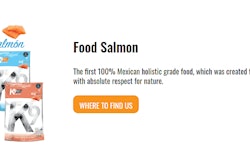
Many people start their day, end their work outs or otherwise pump up their protein intake with whey products. During the past decade, human diet trends came to emphasize high protein, low carbohydrate food. While the high protein trend started among fitness buffs, it came to influence the menus of millions. High protein pet foods followed, such as Instinct Ultimate Protein, which includes whey protein.
Whey protein appears in many pet owners’ own diets, especially fitness-minded humans. Whey protein makes its way into energy bars, shakes, supplements, gels and baked goods. Pet food ingredient suppliers now produce whey protein. Likewise, pet products made with whey protein often are marketed for dogs with active, athletic lifestyles, such as Gorilla Max muscle supplement for dogs. In a survey conducted by WATT Global Media on behalf of a client, respondents said they used whey protein most frequently in high-protein/performance formulations. Puppy and kitten formulas used whey protein too, which makes sense since human milk replacements have used whey protein for decades.
Participate in Petfood Industry's survey on whey protein
While minding their own health and that of their pets and children, pet owners increasingly care about the health and well-being of other people, livestock and wildlife. Pet owners likewise increasingly embrace lifestyles that reduce their resource consumption and pollution production. Whey results as a byproduct from cheese and yogurt production. Making use of byproducts, or co-products, in pet food reduces waste and increases farmers’ income, while allowing the pet food brand to make sustainability marketing claims. In a study published in the journal Sustainability, researchers calculated that whey had the second lowest environmental impact of more than 30 proteins sources, ranging from beef as the most to peanuts as the least.
Barriers to use of whey protein in pet food
While pet foods and treats use whey protein, barriers remain. Survey respondents said they most need nutritional information and empirical research on whey in dog, cat and other pet diets, before using the ingredient in their pet foods, treats and supplements. However, researchers haven’t focused much on whey protein in pets diets. In 2006, one veterinarian found that experience and knowledge of hydrolyzed proteins, including those made from whey, in dog and cat diets remained rudimentary. The journal Veterinary Clinics: Small Animal Practice published the review. A year later, Petfood Industry columnist Dr. Greg Aldrich noted the same thing in Ingredient Insights.
“There are literally mountains of research on milk proteins like whey; but almost none of it pertains to this ingredient as part of a dog or cat diet,” he wrote. “It would be nice if there were some published work directly related to pet food.”
More than a decade later in Poultry Science, scientists published an analysis of amino acid composition and protein quality of whey in relation to dog and cat diets, using poultry chicks as models for the mammals. Whey protein concentrate had a crude protein percentage of 76% with 0.1% crude fiber and 0.56% crude fat. The researchers found that whey protein concentrate had lower proportions of several amino acids than spray dried egg, which is often considered an ideal protein for its blend of amino acids.
Along with a scarcity of published research, another barrier to wider use of whey protein in pet foods may be the price. Cost was the primary reason survey respondents said they did not use whey protein.
Survey participants did see an opportunity for whey in their pet foods, treats and other products. Life-stage products, such as puppy or senior formulations, seems relevant formulations for whey protein inclusion. Grain-free products were another option, as were extruded foods.
Pet food producers have several whey protein products to choose from. Whey protein producers sell their product based on its concentration and processing method. Whey protein concentrate generally contains 70% to 80% protein. Whey protein isolate holds typically more than 90% protein. Processors use enzymes, or chemicals that facilitate reactions, to break whey protein hydrolysate into its constituent molecules, called peptides, and is typically 80% protein.
Regardless of the type of whey protein used, price and lack of research may hold back wider adoption as a pet food ingredient, while human food and health trends may boost its use.

















